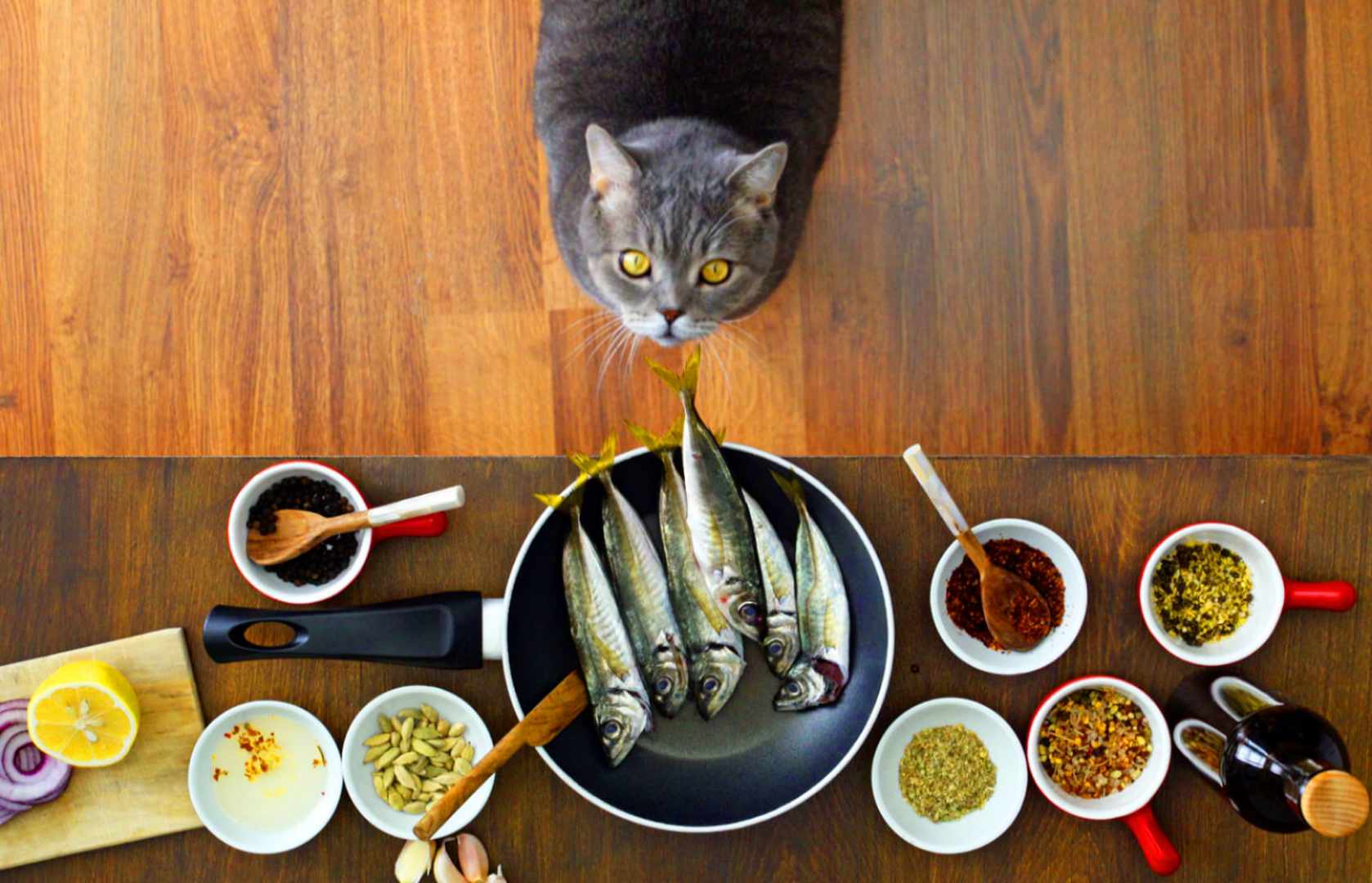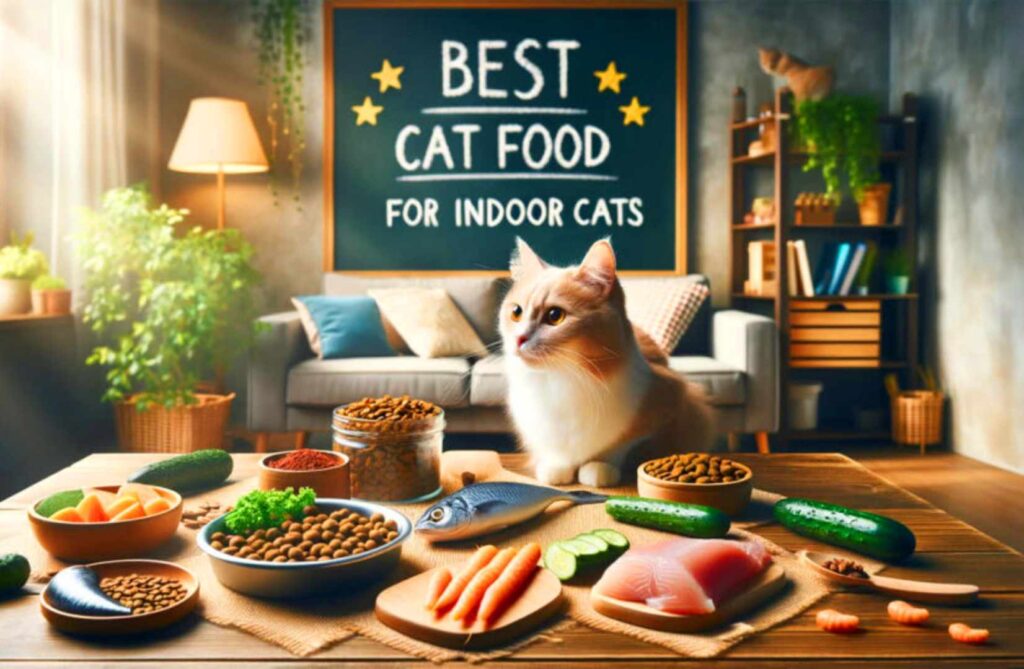To make homemade cat food, choose a protein source, add vegetables, and essential supplements for a balanced diet. Making homemade cat food allows you to control the ingredients and ensure your cat’s nutrition needs are met.
By following a simple recipe tailored to your cat’s dietary requirements, you can provide a healthy and wholesome diet that is free from artificial additives and preservatives. Understanding your cat’s preferences and nutritional needs will help you create a homemade cat food recipe that supports their overall health and well-being.
Making homemade cat food can be a rewarding experience and a way to show your furry friend how much you care about their health.
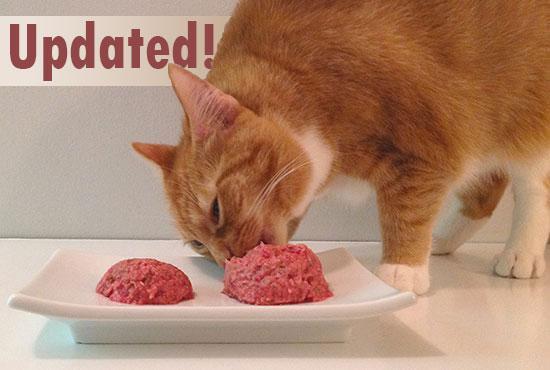
Understanding Your Cat’s Nutritional Needs
Cats require a specific balance of nutrients to maintain good health and overall well-being.
Essential Nutrients For Cats
Proteins: Necessary for muscle growth and repair.
Fats: Provide energy and aid in nutrient absorption.
Carbohydrates: Offer a source of energy but are not essential.
Vitamins and Minerals: Support various bodily functions.
Factors To Consider When Making Homemade Cat Food
1. Consult a Veterinarian: Ensure the recipe meets your cat’s specific needs.
2. Balance of Nutrients: Aim for a blend of proteins, fats, and essential vitamins.
3. Avoid Toxic Foods: Grapes, onions, and chocolate can be harmful to cats.
4. Hydration: Cats often get water from food, so consider moisture content.
5. Monitor Health: Pay attention to your cat’s weight and overall well-being.
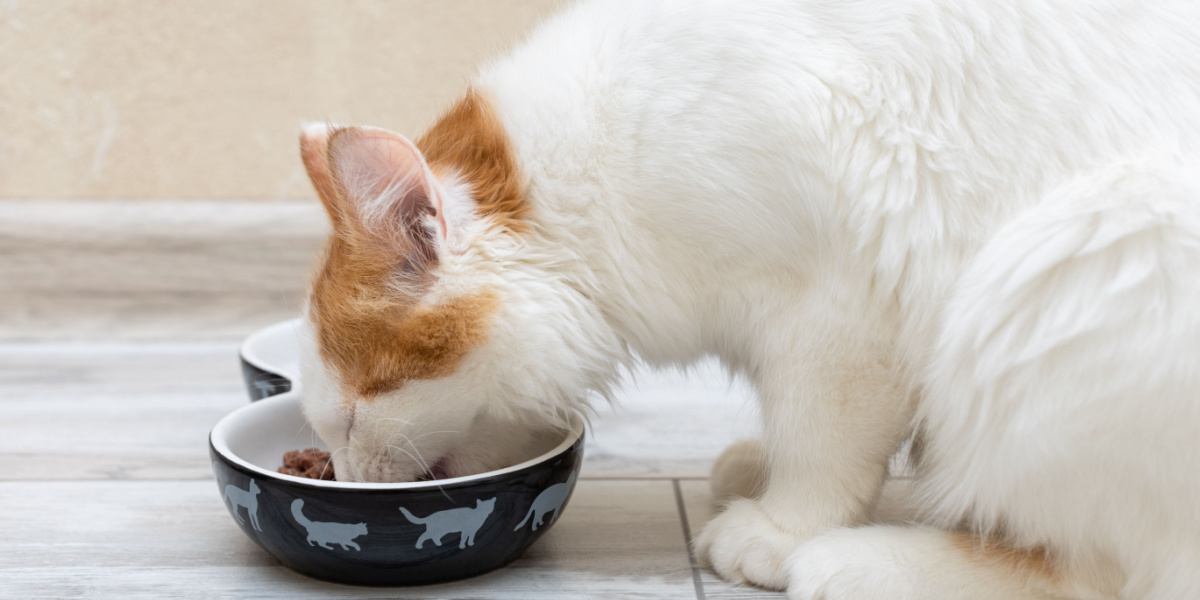
Homemade Cat Food Recipes
Discover simple homemade cat food recipes and easy steps to make nutritious meals for your furry friend. Providing your cat with balanced and wholesome food can be achieved using ingredients commonly found in your kitchen. Creating homemade cat food allows you to ensure your pet receives high-quality, natural nutrition tailored to their specific needs.
Homemade Cat Food Recipes Making homemade cat food can be a rewarding way to ensure your feline friend is getting the best nutrition possible. By crafting your own recipes, you can avoid harmful additives and provide a more personalized diet tailored to your cat’s specific needs. Here are three simple and nutritious homemade cat food recipes to try at home. Recipe 1: Chicken and Rice Ingredients: – 1 pound of boneless, skinless chicken thighs – 1 cup of cooked brown rice – 1/4 cup of chicken broth – 1 tablespoon of olive oil Instructions: 1. Cook the chicken in a pan over medium heat until fully done. 2. Once the chicken is cooked, chop it into small, manageable pieces. 3. In a bowl, mix the cooked rice, chicken broth, and olive oil. 4. Combine the rice mixture with the chopped chicken, ensuring an even distribution. 5. Serve the homemade chicken and rice cat food to your furry friend. Recipe 2: Tuna Delight Ingredients: – 1 can of tuna – 1/2 cup of cooked quinoa – 1/4 cup of water – 1 tablespoon of chopped parsley Instructions: 1. Drain the tuna and flake it in a bowl using a fork. 2. Add the cooked quinoa, water, and chopped parsley to the tuna. 3. Mix the ingredients well to create a moist, flavorful tuna and quinoa blend. 4. Present the homemade tuna delight to your cat, watching as they enjoy the fresh taste. Recipe 3: Vegetarian Option Ingredients: – 1/2 cup of cooked lentils – 1/2 cup of mashed sweet potatoes – 1/4 cup of finely chopped carrots – 1/4 cup of vegetable broth Instructions: 1. In a bowl, combine the cooked lentils, mashed sweet potatoes, and finely chopped carrots. 2. Gradually add the vegetable broth while thoroughly mixing the ingredients. 3. Once the mixture reaches a smooth consistency, it’s ready to serve as a nutritious vegetarian option for your cat. Give these homemade cat food recipes a try to provide your feline companion with a healthy, homemade diet they’ll love.
Guidelines For Making Homemade Cat Food
Making homemade cat food can be a rewarding and healthy choice for your feline friends. By preparing their meals yourself, you have control over the ingredients that go into their food, allowing you to provide a nutritionally balanced diet tailored to their specific needs. To ensure your homemade cat food is both nutritious and delicious, there are a few important guidelines to follow.
Balancing Protein, Carbohydrates, And Fats
When it comes to homemade cat food, achieving the right balance of protein, carbohydrates, and fats is essential for your cat’s overall health. Cats are obligate carnivores, which means they require a high amount of animal-based protein in their diet. Aim to include lean meats, such as chicken or turkey, as the primary source of protein in your cat’s homemade food. Fish can also be incorporated, but avoid using it as the sole protein source due to potential mercury and thiaminase content.
Alongside protein, carbohydrates play a smaller role in a cat’s diet. They should constitute only a small portion of the homemade cat food. Ingredients like cooked rice or oats can provide the necessary carbohydrates while adding stability to the recipe. Remember to keep the carb content low, as cats have a limited ability to digest and utilize carbohydrates.
Fats are another crucial component of homemade cat food. They provide energy and support several vital functions in your cat’s body. Incorporate healthy fats like fish oil, which is rich in omega-3 fatty acids, into your cat’s diet. Be cautious not to use excessive amounts of fatty ingredients, as this can lead to weight gain or other health issues.
Avoiding Harmful Ingredients
When making homemade cat food, it’s important to avoid certain ingredients that can be harmful to your feline companion. Some foods that are safe for humans, such as onions, garlic, and chocolate, can be toxic to cats. These ingredients should never be included in your cat’s homemade meals.
In addition to specific foods, there are also certain nutrients that cats require in different amounts than humans do. For example, cats need a sufficient amount of taurine in their diet, which is essential for their eye and heart health. Taurine is found primarily in animal tissue, so including quality sources of animal protein is vital to meet their taurine needs.
It’s worth noting that simply feeding your cat meat alone is not sufficient. Cats require a balanced diet that encompasses all essential nutrients. To ensure their nutritional needs are met, consider adding supplements recommended by your veterinarian.
Meal Preparation And Storage
Homemade cat food can be easily prepared and stored for your furry friends. Learn the steps to make nutritious meals that promote their health and well-being.
Cooking Tips For Homemade Cat Food
When it comes to preparing homemade cat food, there are a few cooking tips to keep in mind. First and foremost, it’s important to use high-quality ingredients that are safe and nutritious for your feline friend. This includes lean meats, such as chicken or turkey, as well as vegetables like peas and carrots. Avoid using any ingredients that are toxic to cats, such as onions or garlic. Additionally, make sure to cook the meat thoroughly to remove any potential bacteria or parasites. To preserve the nutritional value of the ingredients, try steaming or boiling them instead of frying.
Proper Storage Techniques
Proper storage of homemade cat food is crucial to maintain its freshness and prevent spoilage. Here are some guidelines to ensure your cat’s food stays safe and appetizing: – Refrigeration: After cooking the cat food, allow it to cool to room temperature before storing. Transfer the food into airtight containers or freezer-safe bags, and place them in the refrigerator. This will help inhibit the growth of bacteria and keep the food fresh for up to three days. – Freezing: If you prepare a large batch of cat food, freezing is a great option for extending its shelf life. Divide the food into individual portions and place them in freezer-safe containers or Ziploc bags. Label each container with the date and portion size before placing them in the freezer. Cat food can be stored in the freezer for up to three months. When thawing frozen cat food, be sure to do it slowly in the refrigerator to avoid bacterial growth. – Meal-Sized Portions: To make feeding easier and to prevent waste, consider dividing the cat food into meal-sized portions before storing. This way, you can simply defrost the necessary amount without having to thaw the entire batch. – Quality Check: Before serving the food to your furry friend, always check for signs of spoilage, such as an unpleasant odor or any unusual discoloration. If you notice any of these signs, discard the food immediately to prevent your cat from getting sick. By following these cooking tips and proper storage techniques, you can ensure that your homemade cat food is delicious, nutritious, and safe for your feline companion. Remember to consult with your veterinarian to ensure that the homemade cat food meets your cat’s dietary needs.
Transitioning Your Cat To Homemade Food
Transitioning your cat to homemade food is easier than you think with these simple steps. Learn how to make nutritious and delicious meals for your feline friend without any hassle.
Transitioning Your Cat to Homemade Food Making the switch from commercial cat food to a homemade diet is an important and gradual process. It is crucial to ensure a smooth transition for your feline friend’s digestive system and overall well-being. Here’s how you can safely transition your cat to a homemade food diet. H3 headings must be in HTML syntax. H3: Gradual Introduction of New Food To transition your cat to homemade food, start by gradually introducing the new diet into their existing routine. Begin by mixing a small portion of the homemade food with your cat’s current commercial diet. Slowly increase the proportion of homemade food over the course of a few weeks. This gradual transition helps prevent digestive upset and allows your cat to acclimate to the new diet. H3: Monitoring Your Cat’s Health As you transition your cat to homemade food, it’s essential to closely monitor their health and well-being. Keep an eye on their eating habits, energy levels, coat condition, and overall demeanor. Any sudden changes in these areas could indicate a problem with the new diet. Additionally, regular visits to the veterinarian during the transition period can provide valuable insights into your cat’s health and ensure they are adapting well to the homemade food. By following these steps and being mindful of your cat’s wellbeing, you can effectively transition them to a homemade diet that meets their nutritional needs and promotes their overall health and happiness.
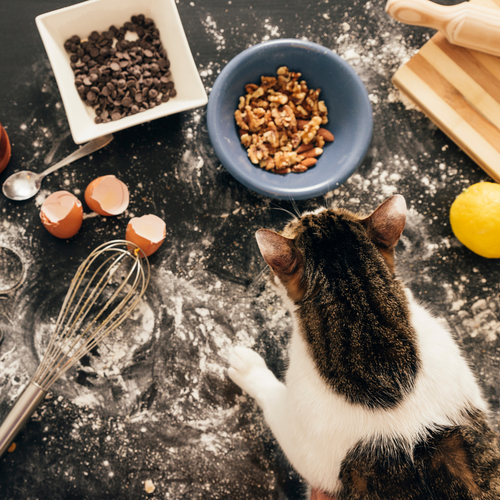
Additional Considerations
When making homemade cat food, there are several additional considerations to keep in mind to ensure your feline friend gets a balanced diet.
Consulting A Vet
Before starting your cat on a homemade diet, it is crucial to consult with a veterinarian.
Supplements For Homemade Cat Food
Consider adding supplements such as taurine and omega-3 fatty acids to meet your cat’s nutritional needs.
Frequently Asked Questions For How To Make Homemade Cat Food
What Are The Benefits Of Homemade Cat Food?
Making homemade cat food ensures quality ingredients that can improve your cat’s health, provide essential nutrients, and eliminate preservatives and fillers found in commercial cat food.
How Do I Know If My Cat Is Getting The Right Nutrients?
Consult with a veterinarian to ensure your homemade cat food meets your cat’s nutritional needs and consider adding supplements for essential vitamins and minerals.
What Are Common Ingredients Used In Homemade Cat Food?
Common ingredients for homemade cat food include protein sources like chicken and turkey, vegetables such as carrots and spinach, and grains like brown rice and oats.
Can I Save Money By Making Homemade Cat Food?
While homemade cat food can be cost-effective, it’s important to carefully balance ingredients and consult with a veterinarian to ensure your cat receives the necessary nutrients.
Conclusion
Making homemade cat food can be a fulfilling and rewarding experience. By providing wholesome and nutritious meals for your feline friend, you can ensure their health and well-being. With proper research and ingredients, you can create balanced and tasty meals that your cat will love.
Start preparing homemade cat food today for a happier and healthier pet.
